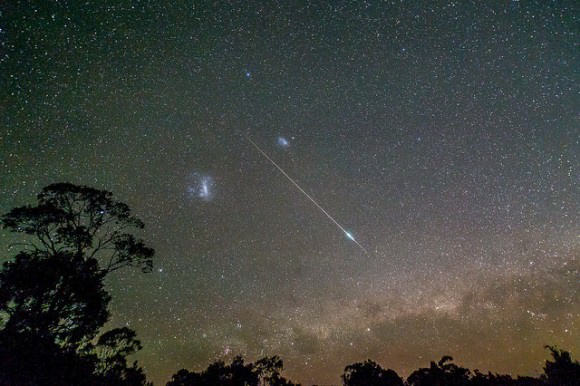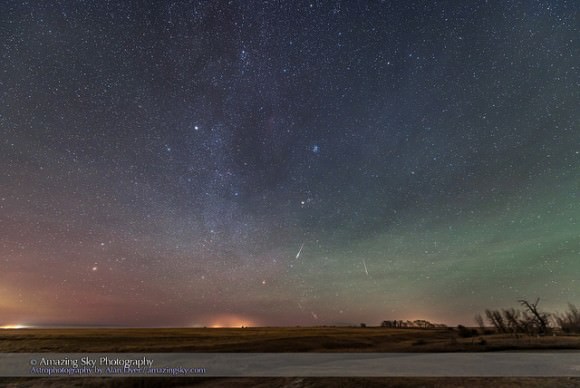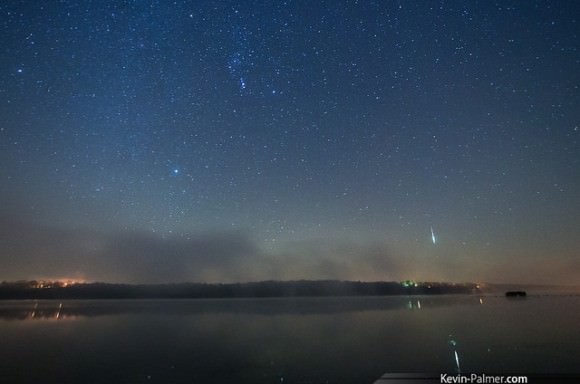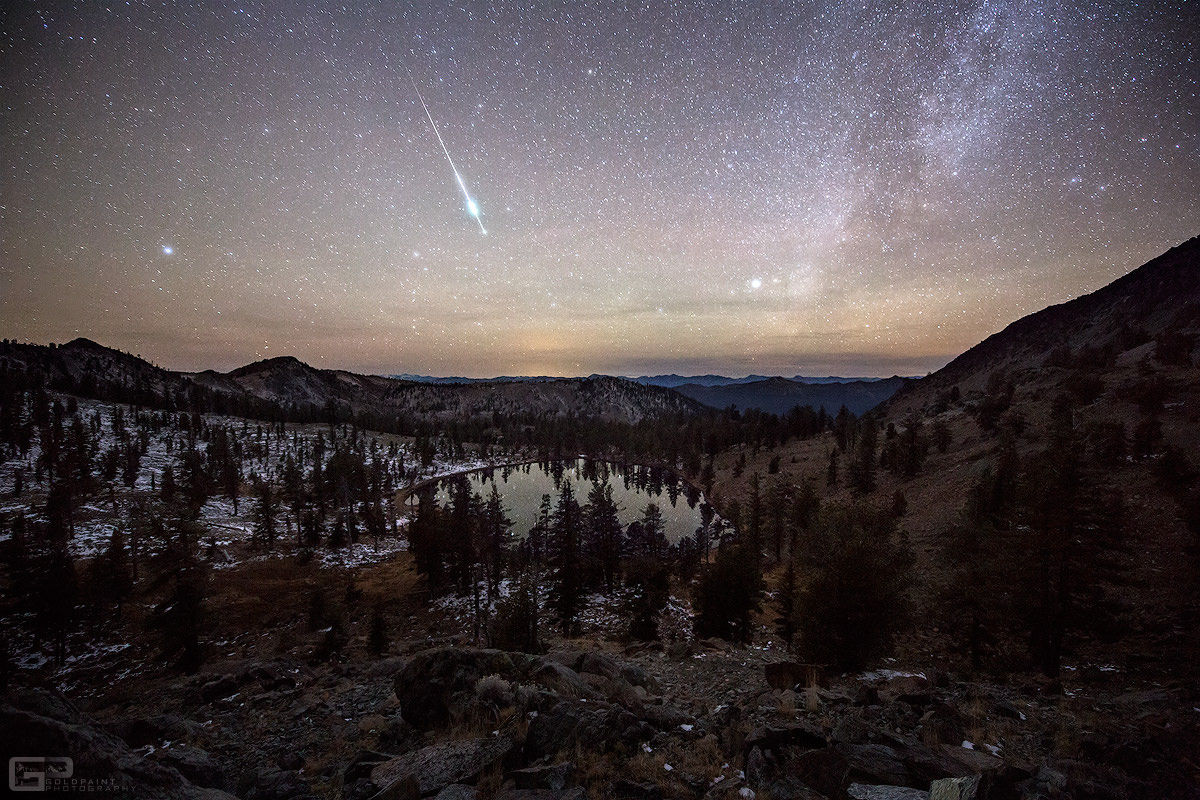“The landscape was just at the verge of trying to silently explode with vibrant colors of red, gold and oranges,” said photographer Brad Goldpaint as he described the autumn view during his hike to Deadfall Basin in California to set up his cameras to try and capture a few Taurid meteors.
But the landscape wasn’t the only thing about to explode.
Later that night Brad captured a few “exploding” meteors that produced what are called persistent trains: what remains of a meteor fireball in the upper atmosphere as winds twist and swirl the expanding debris.
Brad created a time-lapse video from the event and slowed down the footage to highlight the trains.
Persistent trains have been difficult to study because they are rather elusive. But lately, with the widespread availability of ultra-fast lenses and highly sensitive cameras, capturing these trains is becoming more common.
Phil Plait still has the best description out there of what happens when persistent trains are produced:
As a meteoroid (the actual solid chunk of material) blasts through the air, it ionizes the gases, stripping electrons from their parent atoms. As the electrons slowly recombine with the atoms, they emit light — this is how neon signs glow, as well as giant star-forming nebulae in space. The upper-level winds blowing that high (upwards of 100 km/60 miles) create the twisting, fantastic shapes in the train.
The consensus among our Universe Today Flickr pool photographers who posted images of the Taurids this year is that the 2015 Taurids weren’t entirely remarkable. Most astrophotgraphers reported they saw one or two per hour. Here are a few more Taurid meteor shower images from our photographer friends:





So, what’s with the fifteen days of darkness that NASA has supposedly warned us about? It is one of the selections of a quartet at the end of the bolide video.
What is “VIDIBYTE PASTIMERS” and what is it doing a this site??
I know it’s no fault of Nancy’s. Have you sold out, Mr. Cain?
Do you know? Did anybody on the ISS get a Taurid meteor trail from above?
My guess is that would be impossible because to see the trails, the meteors would have had to hit some atmosphere. Even the faintest of atmosphere would pretty much doom the ISS in a very short time.
I think the question was meant to ask “Did anyone on the ISS get a pic/vid of a Taurid from above while looking down at Earth, as opposed to the typical ground-bound vantage point of looking up at them from below?”
My guess is no as well, but dude, that’d be pretty cool, huh?
As an aside, the faintest of atmosphere does drag the ISS downward, requiring periodic re-boosts to maintain its current orbit. http://www.heavens-above.com/IssHeight.aspx?lat=21.9811&lng=-159.3711&loc=L%C4%ABhu%CA%BBe&alt=67&tz=UCT10